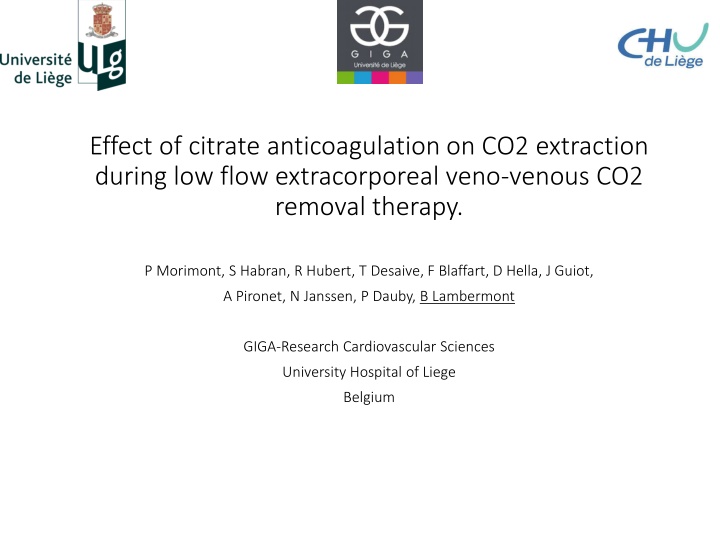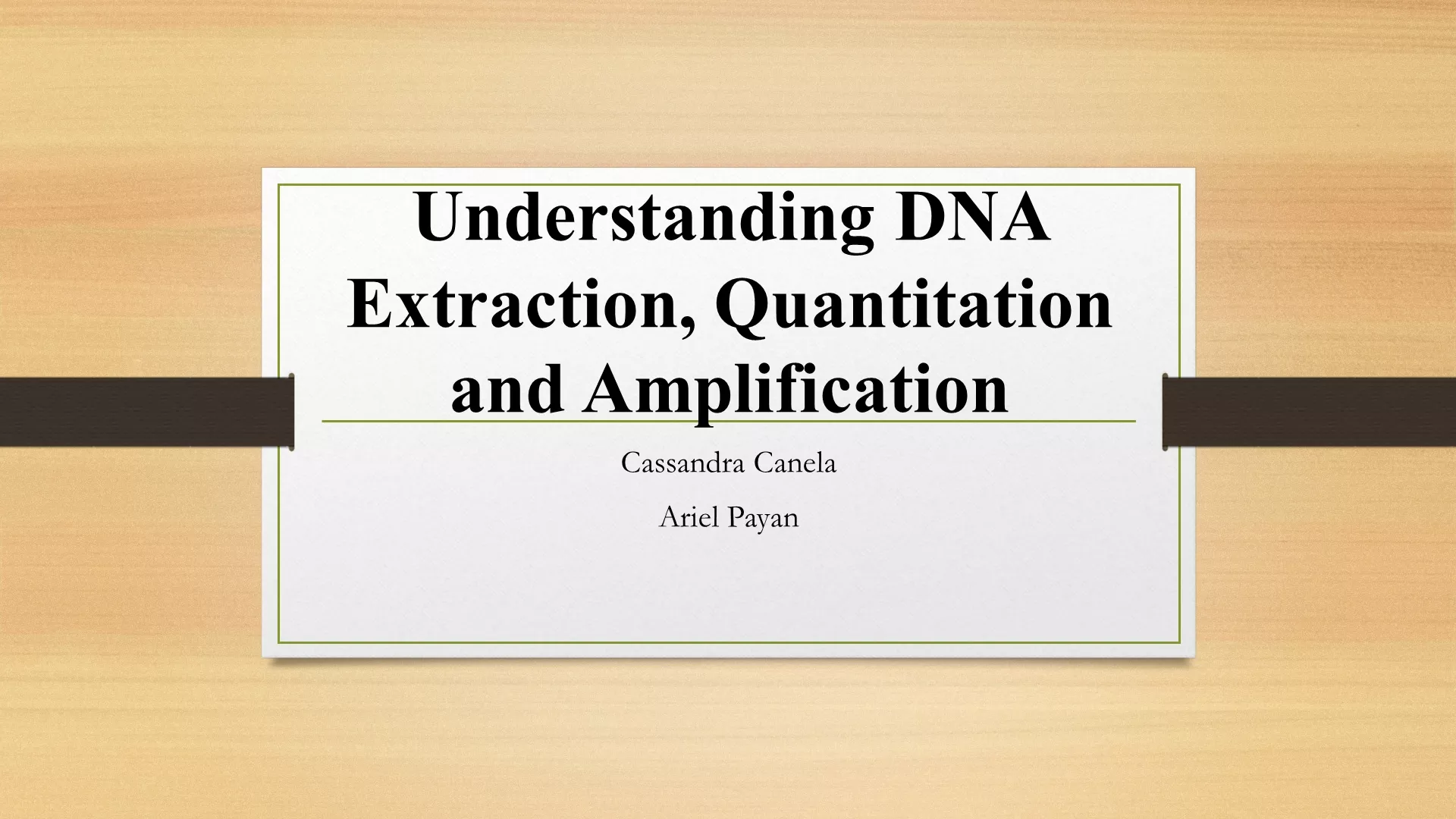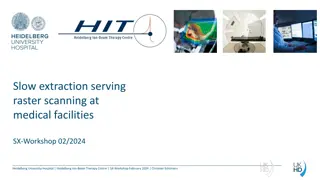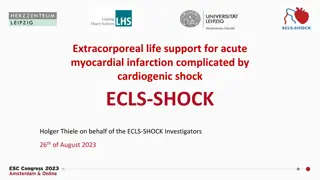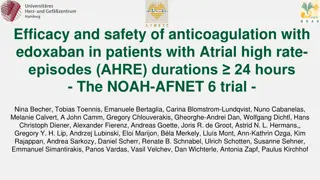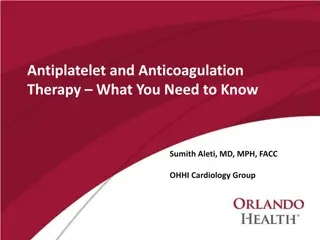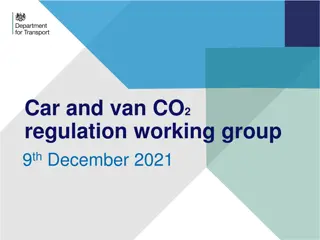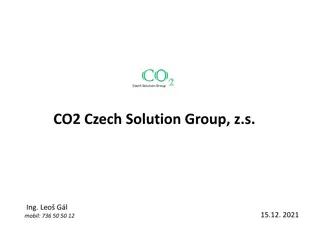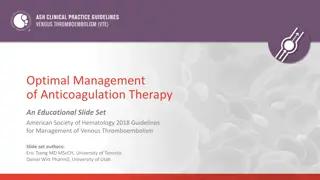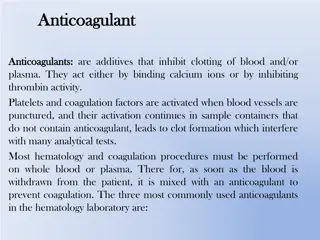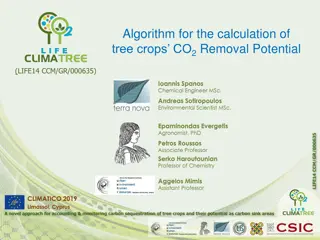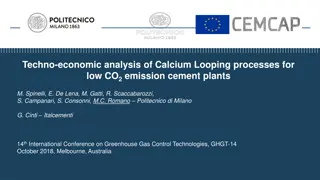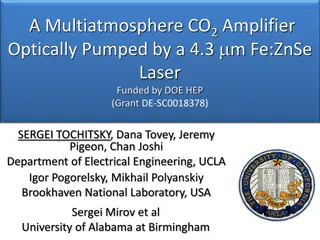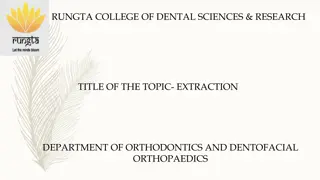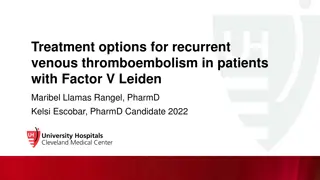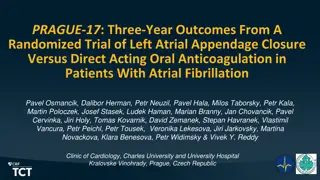Effect of Citrate Anticoagulation on CO2 Extraction in Low Flow Extracorporeal Venovenous CO2 Removal Therapy
This study evaluates the impact of citrate anticoagulation on CO2 extraction during low flow extracorporeal veno-venous CO2 removal therapy. The experiment conducted on a pig model comparing citrate anticoagulation to standard heparin protocol showed a trend towards improved CO2 extraction with citrate anticoagulation. However, this improvement was not statistically significant. The study provides insights into the potential benefits of using citrate anticoagulation in ECCO2RT as an alternative to systemic anticoagulation.
Download Presentation

Please find below an Image/Link to download the presentation.
The content on the website is provided AS IS for your information and personal use only. It may not be sold, licensed, or shared on other websites without obtaining consent from the author.If you encounter any issues during the download, it is possible that the publisher has removed the file from their server.
You are allowed to download the files provided on this website for personal or commercial use, subject to the condition that they are used lawfully. All files are the property of their respective owners.
The content on the website is provided AS IS for your information and personal use only. It may not be sold, licensed, or shared on other websites without obtaining consent from the author.
E N D
Presentation Transcript
Effect of citrate anticoagulation on CO2 extraction during low flow extracorporeal veno-venous CO2 removal therapy. P Morimont, S Habran, R Hubert, T Desaive, F Blaffart, D Hella, J Guiot, A Pironet, N Janssen, P Dauby, B Lambermont GIGA-Research Cardiovascular Sciences University Hospital of Liege Belgium
INTRODUCTION Low flow extracorporeal veno-venous CO2 removal therapy (ECCO2RT) in addition to mechanical ventilation is used to remove CO2 while allowing protective protectiveventilation ventilationduring ARDS. However, this technique requires systemic anticoagulation that may induce severe severebleeding bleedingin critically ill patients. An alternative method would consist in using citrate ECCO2RT device. citrate anticoagulation anticoagulation of The aim of this study was to assess the effect of citrate anticoagulation on CO2 extraction during ECCO2RT.
METHODS This study was performed on an experimental model of severe hypercapnic hypercapnicacidosis acidosis performed in 2 groups of 3 pigs. severe In the first group (heparin group standard protocol of unfractionated heparin while citrate was used for ECCO2RT device anticoagulation in the second group (citrate group heparin group), pigs were anticoagulated with a citrate group).
METHODS After sedation, analgesia and endotracheal intubation via a cervical tracheostomy, pigs were connected to a volume-cycled ventilator (tidal volume 10mL/Kg, respiratory rate 20/min, FiO2 1.0, PEEP 5cmH2O). Severe hypercapnic hypercapnic acidosis acidosis was obtained by reducing tidal volume by half. ECCO2RT was started in both groups when arterial pH was lower than 7.2. Pump Assisted Lung Protection Pump Assisted Lung Protection (PALP, Maquet, Germany) system was used with two small cannulas to remove CO2. Blood flow in the PALP was successively set at 200, 400, 600 and 0 mL/min, each setting lasting 60 minutes. In heparin group, systemic anticoagulation was performed with ACT monitoring. In citrate group, regional citrate anticoagulation of ECCO2RT regional citrate anticoagulation of ECCO2RT device was performed with calcium rate control (similarly to CRRT). Sweep gas flow was set at 10 L/min. CO2 extraction, arterial pH, PaCO2 as well as systemic and pulmonary pressures were continuously followed.
140 RESULTS 120 100 CO2 extraction (mL/min) 80 60 40 20 0 -20 -40 B PALP 200 PALP 600 Citrate Heparin VP PALP 400 PALP 0 A trend toward better CO2 extraction trend toward better CO2 extraction was observed in the citrate group but not statistically significant as compared to the heparin group. Mean arterial pH was normalized to 7,37 1.4 at an extracorporeal blood flow of 400 mL/min 400 mL/min, coming from 7,11 1.3. Arterial pH did not significantly changed in citrate group as compared to heparin group.
CONCLUSIONS Using regional citrate anticoagulation regional citrate anticoagulation during ECCO2RT is feasible and could lead to less hemorrhagic complications. CO2 extraction was not statistically different in citrate group as compared to heparin group but there was a clear trend towards better CO2 extraction clear trend towards better CO2 extraction at blood flow rates of 400 mL/min.
